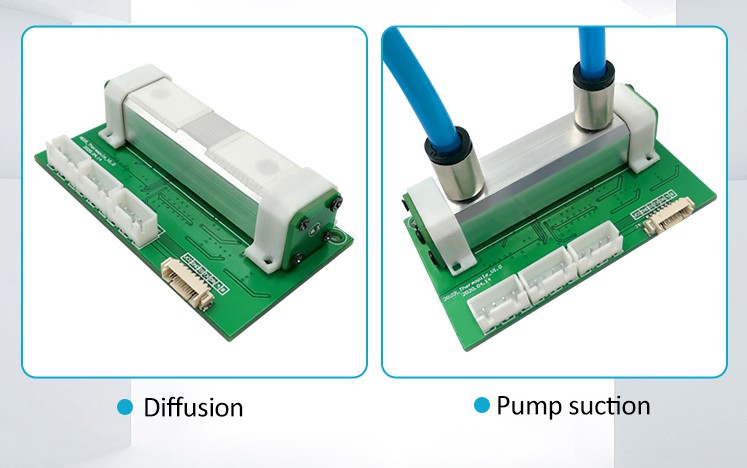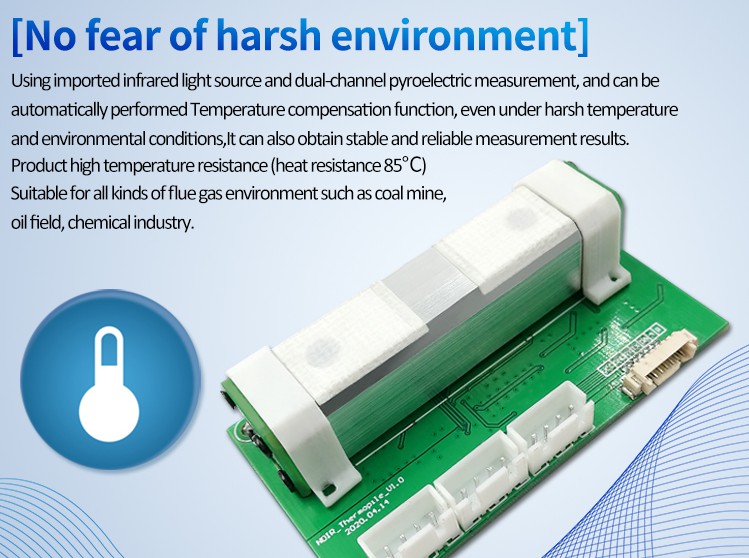
How does an NDIR CO2 Gas Sensor Work?
NDIR is the industry term for "non-dispersive infrared" and the NDIR CO2 sensor is the most commonly used type of gas sensor used to measure carbon dioxide (CO2).

NDIR is the industry term for "non-dispersive infrared" and the NDIR CO2 sensor is the most commonly used type of gas sensor used to measure carbon dioxide (CO2).
NDIR is the industry term for "non-dispersive infrared" and the NDIR CO2 sensor is the most commonly used type of gas sensor used to measure carbon dioxide (CO2).
The gas sensor works by using an infrared (IR) lamp to direct light waves through a tube filled with air samples. This air moves towards an optical filter in front of the infrared light detector. An infrared detector measures the amount of infrared light passing through an optical filter.
The band of IR radiation also produced by the lamp is very close to the 4.26-micron absorption band of CO2. Because the IR spectrum of CO2 is unique, matching the light source wavelength serves as a signature or "fingerprint" to identify the CO2 molecule.
As the IR light passes through the length of the tube, the CO2 gas molecules absorb the specific band of IR light while letting other wavelengths of light pass through. At the detector end, the remaining light hits an optical filter that absorbs every wavelength of light except the wavelength absorbed by CO2 molecules in the air sample tube.
Finally, an IR detector reads the remaining amount of light that was not absorbed by the CO2 molecules or the optical filter.

The difference between the amount of light radiated by the IR lamp and the amount of IR light received by the detector is measured. Since the difference is the result of the light being absorbed by the CO2 molecules in the air inside the tube, it is directly proportional to the number of CO2 molecules in the air sample tube.
All measurements start out as analog micro-voltages. While some sensors output this as an analog voltage or 4-20mA signal, some also include an analog to digital converter on the sensor PCB that converts the voltages into serial or RS-485 output. Serial output is especially useful for using NDIR CO2 sensors with Arduino or Raspberry Pi microcontrollers.

Since Joseph Black, a Scottish chemist and physician first identified carbon dioxide in the 1750s, scientists have looked for a way to measure this common gas. One of the earliest CO2 measurement devices was a mercury manometer. Manometers use a U-shaped glass tube filled with mercury to measure gas pressure. If temperature, pressure, and volume of a dry gas sample containing CO2 molecules are known, the moles of CO2 can be calculated using the Ideal gas law (PV=nRT).
While mercury manometers can be very accurate, the procedure for measuring CO2 levels in air samples can take hours. That’s why when Charles Keeling was asked by the US Weather Bureau to begin taking hourly atmospheric CO2 measurements at the Mauna Loa volcano in Hawaii he used an early infrared (IR) gas analyzer calibrated against his manometer. The original Applied Physics Corp. Infrared Gas Analyzer operated on Mauna Loa from 1958 until 2006.
Like every IR gas sensor, the analyzer at Mauna Loa used the same basic principle for measuring CO2. It has an infrared light radiation source at one end of a gas sample tube and an IR detector at the other. The band of infrared radiation is very close to the absorption band of CO2. As a result, the amount of light radiation that is absorbed by the CO2 molecules is proportional to the amount of carbon dioxide in the gas sample. However, since low levels of CO2 do not absorb much light, a long tube is needed before the effect can be measured.

While the original IR gas analyzer was accurate, it was bulky. The sample tube alone was 40cm (16 inches) long.
The challenge is getting the right balance. Engineers use a longer optical path to measure lower levels of CO2 more accurately - which means a larger gas sample chamber. On the other hand, in ambient air environments - such as schools, offices, and homes - the demand is for ever-smaller sensors to fit neatly inside compact devices.